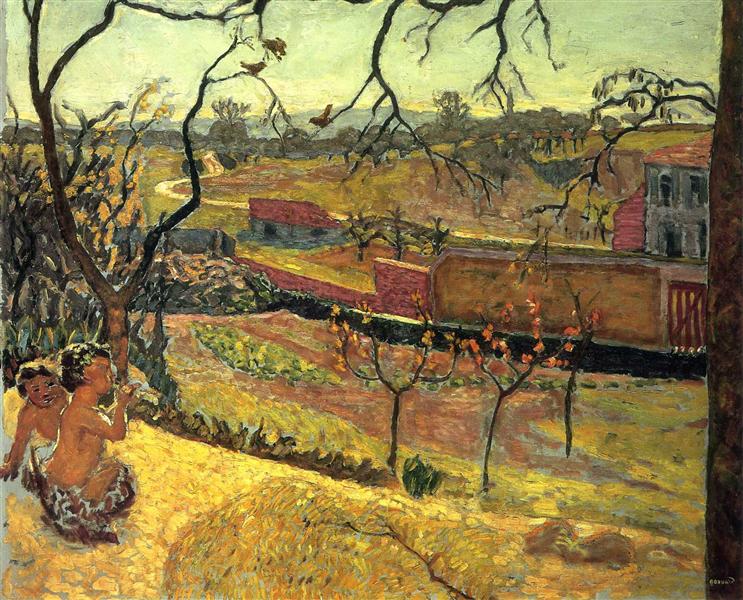Description
The work "Principles of Spring (little faunos)", created in 1909 by Pierre Bonnard, is located at the cusp of the author's artistic production, a prominent representative of post -impressionism. This painting embodies the essence of the early twentieth century, where emotions and light are represented with an almost intimate sensibility, a distinctive seal in Bonnard's work.
The composition of "principles of spring" can be analyzed through its intense use of color and its peculiar treatment of light. Bonnard is known for his ability to transform everyday scenes into almost dreamlike visions, and this work is no exception. The palette is rich and vibrant; The green, yellow, and roses predominate, evoking an atmosphere of rebirth and freshness that is naturally associated with the arrival of spring. The light is filtered through foliage, creating a light effect that seems to wrap the small fauns who play on the scene. This interaction between light and color not only enhances the vitality of the work, but also suggests an almost magical connection between the characters and their surroundings.
In the work, we observe two faunos in a position that suggests game and joy, elements that are very representative of classical culture, where these mythological beings symbolize the connection with nature and the celebration of life. The representation of the faunos, who flow in anointed amber tones, shows Bonnard's mastery to capture the essence of an ephemeral moment. The almost abstract treatment of bodies in the natural context suggests that the artist does not seek to represent a specific narrative moment, but rather to combine the emotional perception of space and nature with a sense of spring joy.
The influences of symbolism and fauvism are evident in this work. Bonnard, although close to fauvistas for his vibrant chromatism, distances himself from the most unbridled approach to his contemporaries, opting for a more intimate and reflective style. This is manifested not only in the choice of subjects but also in their disposal in space, where the floral background, characterized by a colored outbreak, serves as a frame that catches the viewer's gaze and invites it to wander between what was represented and The emotionally evocative.
"Principles of Spring" can also be contextualized within the development of the Nabis movement, a group with which Bonnard was associated, who sought to go beyond realism to express emotions and sensations through painting. The work is a testimony of both its evolution and artist and its search for the sublime in everyday life.
In conclusion, Pierre Bonnard offers us in "Principles of Spring" a glowing vision that transcends the simple fact of representation, leading us to experience a dance between the tangible and the ethereal. The artist not only paints a scene, but captures the essence of spring at a time of celebration of life, reminding us of the intrinsic beauty of the world around us and our own place within it. It is a reminder that, in the simplicity of a shared moment between nature and mythological, a depth of meaning resides that only one master From your caliber you can communicate.
KUADROS ©, a famous paint on your wall.
Reproductions of paintings handmade oil, with the quality of professional artists and the distinctive seal of KUADROS ©.
Art reproduction service with satisfaction guarantee. If you are not completely satisfied with the replica of your painting, we refund your money 100%.

